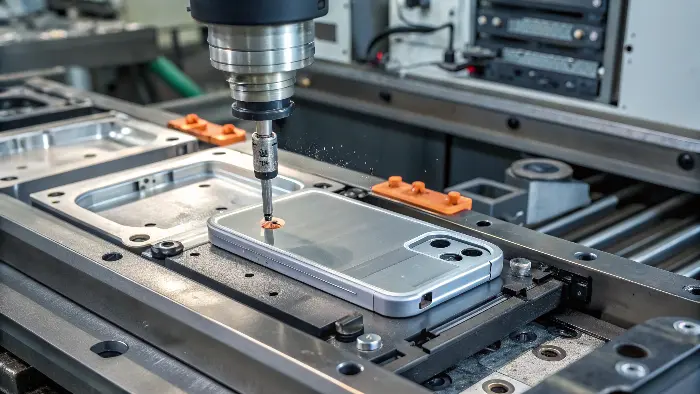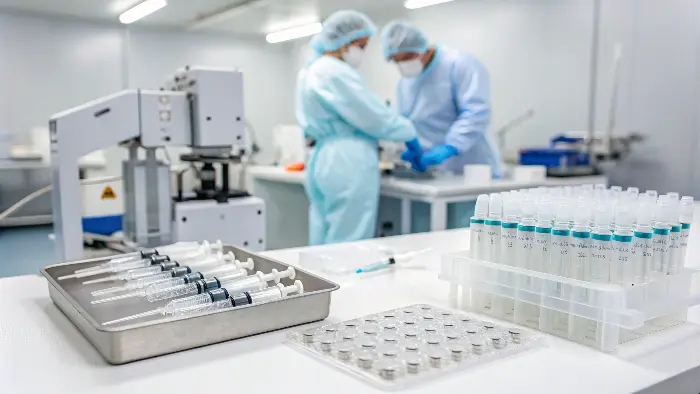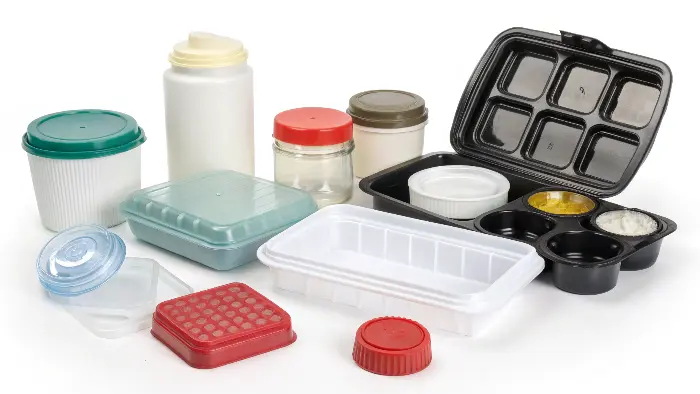Struggling to grasp injection molding’s vast reach? Overwhelmed by its applications? CKMOLD demystifies it, showing its power across key sectors for your business.
Injection molding creates countless everyday items. From car parts to medical tools and electronics casings, its versatility, precision, and cost-effectiveness make it a vital manufacturing process for diverse industries, offering tailored solutions for complex needs.
I’ve been in this molding game for a long time, and it still fascinates me how one process can touch so many different parts of our lives. It’s not just about making widgets; it’s about providing solutions. For someone like Michael, running a manufacturing company, understanding this breadth can spark new ideas or refine existing processes. He’s always looking for that competitive edge, and sometimes it comes from knowing what’s possible. So, let’s dive into some of these industries and see how injection molding really makes a difference. You might be surprised! It’s like having a superpower in manufacturing, honestly.
How is Injection Molding Driving the Automotive Industry Forward?
Automotive parts demand precision and durability. Inferior components lead to recalls and safety risks. Injection molding delivers robust, complex parts vital for modern vehicles, ensuring reliability and performance. It’s a tough business!
Injection molding produces countless automotive parts, from intricate interior components like dashboards and door panels to exterior elements like bumpers and lighting housings. It offers design freedom, weight reduction, and cost-effective mass production, which is exactly what car makers need.
When you think about your car, you might not immediately think "injection molding," but trust me, it’s everywhere. The automotive sector was one of the early adopters, and they’ve pushed the boundaries of what we can do with plastics. It’s a field where "good enough" just doesn’t cut it.
From Bumper to Bumper: The Scope of Molded Parts
Seriously, take a walk around your car. The dashboard? Likely injection molded. The door handles, interior trim pieces, center console, air vents, even those complex headlight and taillight housings – yup, all prime candidates for injection molding. And that’s just what you see. Under the hood, there are engine covers, fluid reservoirs, fan shrouds, and numerous clips and connectors, all precision-molded. I remember a project for a series of interior clips. Sounds simple, right? But they had to withstand specific pull forces, fit into super tight spaces, and be easy to assemble on the line. Tiny parts, big impact on assembly speed and reliability.
Material Matters: Meeting Automotive Demands
Cars live a hard life. They face extreme temperatures, UV radiation, chemicals (like fuel and cleaning agents), and constant vibration. So, the plastics we use have to be tough. We’re talking engineered polymers like ABS, polypropylene, nylon, polycarbonate, and even high-performance materials like PEEK for under-hood applications. Choosing the right material is critical. For example, polycarbonate is great for headlight lenses because of its clarity and impact resistance, while glass-filled nylon might be used for a structural bracket because of its strength and stiffness. It’s a whole science, and getting it right means a safer, longer-lasting vehicle.
The CKMOLD Edge in Automotive
For a business owner like Michael, who understands the importance of reliable suppliers, knowing that your molder understands these demands is key. It’s not just about squirting plastic into a mold. It’s about material selection, mold design for durability and precision, and process control to ensure every part meets stringent automotive standards. We help our clients think about things like draft angles for easy ejection, a consistent wall thickness to avoid sink marks on visible parts, and proper gate locations to ensure the part fills correctly. These details make all the difference.
Why is Injection Molding Indispensable for Consumer Electronics?
Your latest gadget feels cheap or breaks easily? Low-quality casings ruin great tech. Injection molding provides the sleek, durable, and precise enclosures essential for today’s consumer electronics. Nobody wants a flimsy phone!
For consumer electronics, injection molding creates everything from smartphone casings and TV frames to intricate internal components. It allows for complex designs, tight tolerances, diverse material properties, and aesthetically pleasing finishes essential for market success.

This is Michael’s world – plastic components for consumer electronics. And boy, is it a demanding one! Consumers expect products that not only work flawlessly but also look and feel premium. Injection molding is the workhorse that makes this possible.
The Look and Feel: Aesthetics and Ergonomics
Think about your smartphone, your laptop, your TV remote. The first thing you interact with is the casing. Injection molding allows for incredible design freedom. We can create smooth, glossy finishes, textured surfaces for better grip, or even mimic other materials like metal or wood. Color possibilities are virtually endless. And it’s not just about looks; it’s about ergonomics. How a device feels in your hand is crucial. We can mold complex curves and contours that make products comfortable to use. I recall working on a gaming controller. The client was obsessed with the ergonomics – every curve, every button placement. We went through several mold modifications to get it just right. That’s the level of detail we’re talking about.
Miniaturization and Complexity
Consumer electronics are constantly getting smaller, thinner, and more packed with features. This means the internal components and the housings themselves need to be incredibly precise. We’re talking about thin walls, intricate internal ribs and bosses for mounting circuit boards and batteries, and snap-fit features that eliminate the need for screws. The molds for these parts are often incredibly complex, with multiple slides and lifters to create these features. Tolerances are tight – often down to fractions of a millimeter. If a snap-fit is off by just a tiny bit, the whole assembly might not work.
Michael’s Business: A Perfect Fit
For Michael’s company, specializing in plastic components for this sector, consistency and quality are paramount. A reliable molder like CKMOLD can be a true partner. We understand the need for rapid prototyping, the importance of material selection (e.g., flame-retardant plastics for safety, or materials with good EMI shielding properties), and the critical nature of dimensional accuracy. Delivering high-precision molds that can produce millions of identical parts, cycle after cycle, is what we do. This helps Michael manage his lead times and ensure his company stays competitive. It’s all about that "Master Molding Right" philosophy.
What Makes Injection Molding Critical for Life-Saving Medical Devices?
Medical device failures can have dire consequences. Contamination or imprecision is unacceptable. Injection molding offers sterile, biocompatible, and ultra-precise components, crucial for patient safety and device efficacy. There’s no room for error here.
Injection molding is vital for medical devices, producing sterile, single-use items like syringes and IV components, as well as complex housings for diagnostic equipment. It ensures precision, biocompatibility, and cost-effectiveness for critical healthcare applications.

The medical field is one where precision and reliability are, quite literally, a matter of life and death. Injection molding plays a huge role here, from simple disposable items to complex components for sophisticated diagnostic machinery. It’s a responsibility we take very seriously.
Precision and Purity: Non-Negotiables
When you’re making parts for medical devices, there’s zero tolerance for defects. Think about a syringe barrel or the components in an IV set. They need to be perfectly smooth, free of any flash (excess plastic), and dimensionally exact to ensure proper function and prevent leaks. Many medical parts are single-use to prevent cross-contamination, so they need to be produced cost-effectively in very high volumes. Cleanroom molding environments are often required to maintain sterility. I once visited a facility making parts for drug delivery systems – the level of cleanliness and process control was astounding. It really drives home the importance of getting every detail right.
Material Science in Medicine
The materials used in medical devices are highly specialized. They often need to be biocompatible, meaning they won’t cause an adverse reaction when in contact with the human body. They might need to withstand sterilization processes like autoclaving, gamma radiation, or EtO (ethylene oxide) gas. Common materials include medical-grade polycarbonate, polypropylene, polysulfone, and PEEK. We work closely with clients to select materials that meet all the regulatory requirements (like FDA or ISO 10993) and performance needs. Sometimes a part needs to be crystal clear for fluid visibility, other times it needs to be incredibly strong yet flexible.
The Responsibility of a Mold Maker
For a company like CKMOLD, serving the medical industry means a deep understanding of these stringent requirements. It’s not just about making a mold that produces a part; it’s about ensuring that the entire process, from material handling to molding and quality control, is documented and validated. Traceability is key. We need to be able to track materials and process parameters for every batch of parts. For Michael, if he were ever to venture into medical components, partnering with a molder who has this experience would be absolutely crucial. It’s a different ball game, with huge responsibilities.
How Does Injection Molding Shape the World of Packaging?
Damaged goods due to flimsy packaging? Poor presentation hurting your brand? Injection molding creates durable, attractive, and functional packaging solutions that protect products and enhance appeal. First impressions count!
Injection molding produces a vast array of packaging, from food containers and bottle caps to cosmetic jars and protective casings for electronics. It offers design flexibility, material variety, and high-volume production for diverse packaging needs.

Packaging is everywhere, and a huge chunk of it is made using injection molding. It’s an industry driven by volume, cost, and increasingly, consumer appeal and sustainability. It might seem simple, but there’s a lot of clever engineering that goes into that bottle cap or food container.
Protecting and Presenting: Dual Roles
Good packaging does two main jobs: it protects the product inside, and it helps to sell it. Injection molding excels at both. We can create robust containers with tight-fitting lids to keep food fresh or prevent leaks. Think about tamper-evident caps – those little rings that break when you first open a bottle. That’s often an injection-molded feature. For cosmetics or high-end electronics, the packaging is part of the brand experience. Injection molding allows for elegant shapes, vibrant colors, and high-quality finishes that make a product stand out on the shelf. I’ve seen some incredibly creative cosmetic packaging – intricate designs, beautiful textures, all achieved with clever mold design.
Sustainability in Molded Packaging
Sustainability is a big topic in packaging right now, and rightly so. Injection molding can contribute here. We can use recyclable plastics like PET and polypropylene. There’s also a growing interest in using recycled content and bio-based plastics. Thin-walling – designing parts with the thinnest possible walls while still maintaining strength – is a key strategy to reduce material usage, and injection molding is great for that. It requires precise mold design and process control, but the savings in material and cycle time can be significant. This is something business owners like Michael, who are conscious of costs and environmental impact, are increasingly asking about.
Customization is Key
One of the real strengths of injection molding in packaging is the ability to create custom solutions. While standard containers and caps are common, many brands want unique packaging to differentiate themselves. We can mold in logos, create unique shapes, and incorporate special features like living hinges (thin sections of plastic that act as a hinge, often seen on flip-top caps). For businesses that need specialized protective packaging for delicate components, custom-molded inserts can provide a perfect fit and excellent protection. This level of customization, combined with the ability to produce at high speeds, makes injection molding a go-to for many packaging applications.
Conclusion
From the car you drive to the medical tools saving lives, and even the case on your phone, injection molding is a quiet giant. It’s a versatile, precise, and incredibly cost-effective process that CKMOLD is proud to master, helping businesses like Michael’s thrive.
